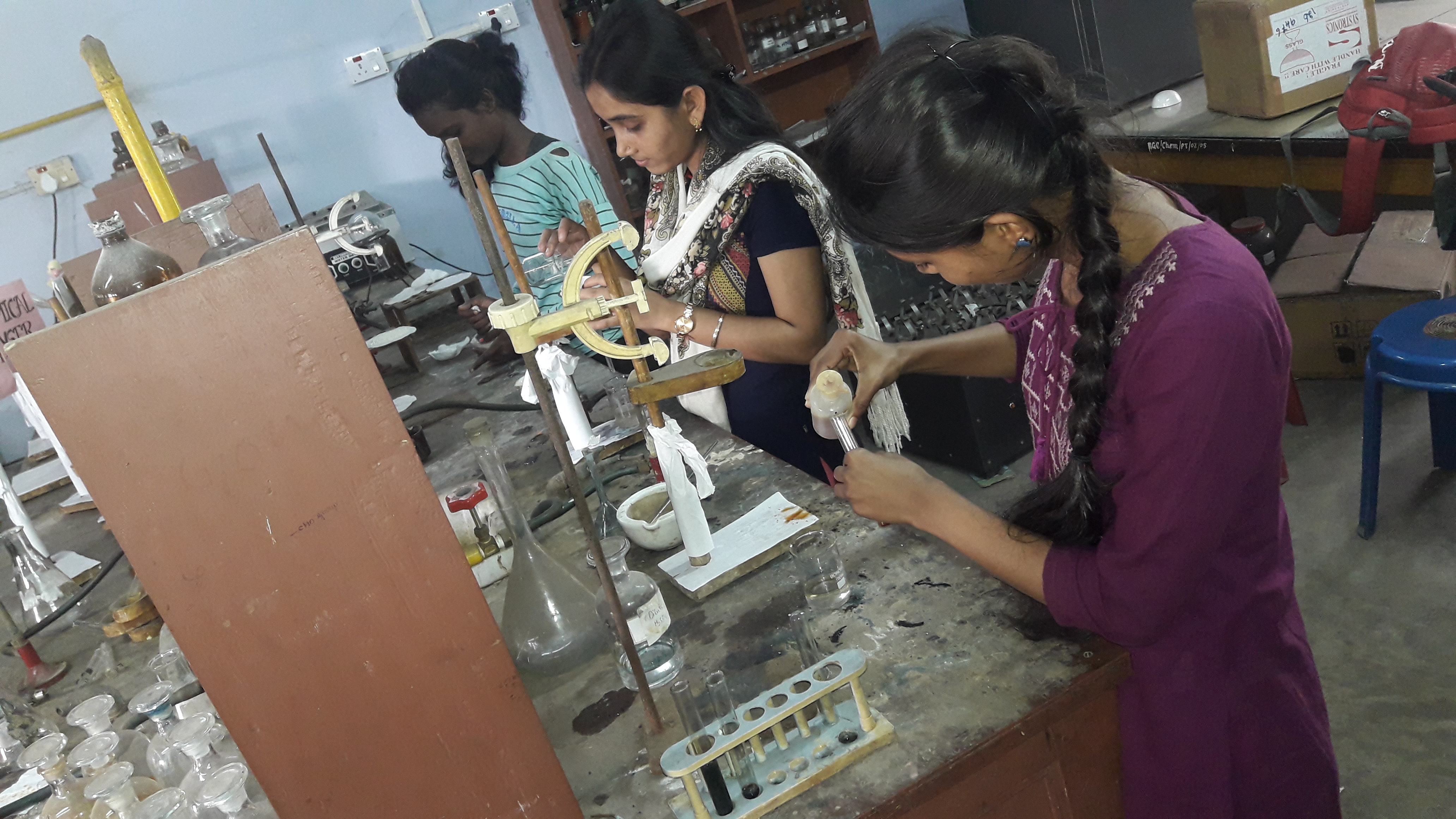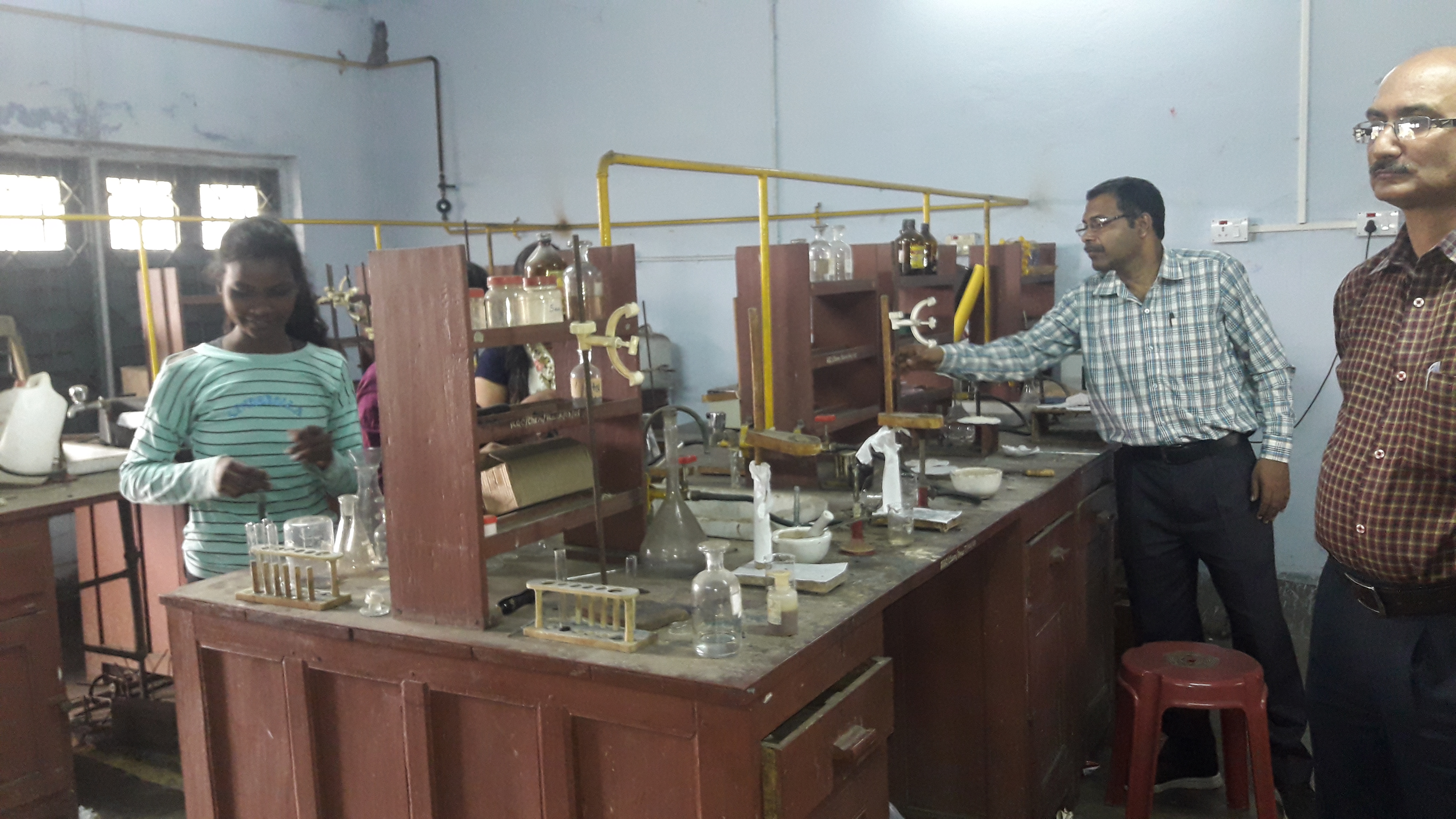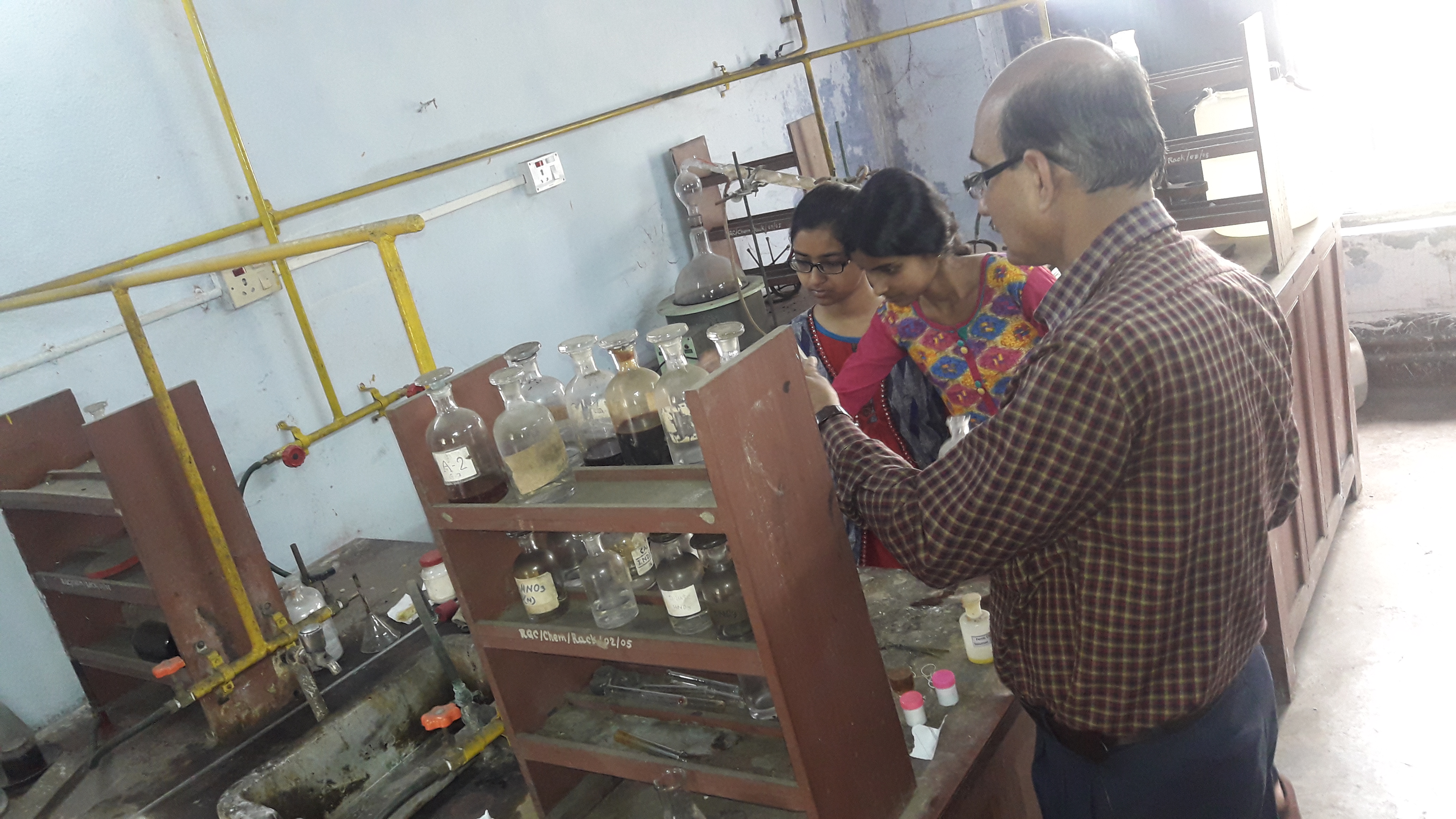Laboratory
The laboratory based departments of thecollege have well equipped laboratory facilities. These facilities are availedby the students to perform experiments in their practical classes under theguidance of their subject teachers. Simultaneously some of the teachers also availthe laboratory facilities to do research.
The laboratoriesare cleaned periodically.
Maintenance ofthe laboratory facilities and equipment are done regularly
Any kind ofrequisition and purchase of laboratory equipment and facilities is madecentrally
Stock Registersare maintained and updated regularly.
PHYSICS DEPARTMENT
The Physics Department of the College (Raniganj Girls’ College), established in 1990, put its first footstep with General Degree Course, only, in the academic session 1990-1991.Subsequent introduction of the Honours Course in the subject took place in the academic session 2001-2002.
Since the very inception of the course/courses in the subject, it has been the sincere attempt of the dedicated teachers of the department, intimately sharing the vision admission of the institution, so that excellence in laboratory involved teaching(apart from that in theoretical one) is achieved with sufficient number of equipment and the space involved for displaying the same.
The department currently runs three years (six semesters) Bachelor of Science degree in Physics (Honours, Program and Generic) under the Choice Based Credit System(C.B.C.S.), prescribed by the U.G.C., India.Though some laboratory equipment are common for all the three courses,proper care is taken to see that equipment in adequate number are available to serve the purpose of all the students,whether it is Honours, or Program or Generic Elective.
Stress is given to see that the students are allowed to enjoy the right access to freely use the laboratory equipment, to play with the equipment, and to visualize the theory involved therein.
The department has been the center of exams, with its state-of-the-art laboratories, whenever and as required by the University (B.U./K.N.U) concerned.
The laboratory equipment/experimental set-ups, arranged in five rooms/laboratories,serves the practical/experimental works/hands-on trainings on Mechanics, Electricity&Magnetism, Electronics, Heat, sound/oscillation, Optics, Quantum Mechanics and computer science, as prescribed by the concerned University.
As per the specific course structure, as prescribed by the university, the department (Physics) is able to provide different apparatus/experimental set-ups as below:
1. Capillaryrise and Jaeger’s method apparatus involving Surface Tension.
Poiseuille’sand Stokes’appataus involving measurements of coefficient of viscosity.
2. Measurements of Young’smodulus: Searle’s method, Flexure beam-bending method; Rigidity modulus:Dynamical method. Acceleration due to gravity using Bar and Kater’s pendulum;Spring constant and Moment of inertia measuring apparatus,Resonant length andfrequency measurement using sonometer; measurement of velocity of sound.
3. LCRcircuit apparatus, its response curve study. Ballistic and dead-beatgalvanometers; Multimeters, Network theorems studies.
4. Meterbridge, Carey-Foster’s bridge, Potentiometers.
5. Todetermine low as well as high resistance, self inductance, Mutual inductance.
6. Apparatusinvolving determination of coefficient of thermal conductivity: Lee’sapparatus; temperature coefficient of resistance, thermo e.m.f. ofthermocouple, coefficient of linear expansion, Boiling point by platinumresistance thermometer, etc.
7. Electricalwiring board and accessories.
8. Opticalequipment to study Interference, diffraction and polarization of light wave,refractive index of the material of a prism, dispersive power: Spectrometers,Fresnel Biprism, Polarimeters, Newton’s ring apparatus, Gas discharge tubes,Gratings, High voltage power suppliers, sodium light and laser sources. Opticalbench for measuring focal length and power of lenses.
9. Computersand printers.
10 To design a CEtransistor amplifier, digital to analog converter, inverting and non-invertingamplifiers, use of an op-amp as an integrator and differentiator, studyingDiode and Triode characteristics.
11. CathodeRay Oscilloscope, Signal generators, AC millivoltmeter.Use of CRO to measurevoltage, time period of a periodic waveform, design a switch (NOT gate), toverify and design AND, OR, NOT and XORgates using NAND gates, combinational logic system for specific Truth Table,convert a Boolean expression into logic circuit, Half adder, Full Adder, 4-bit binary adder,Subtractors, Flip –Flops, etc.
12. Apparatusfor measuring Planck’s constant (black-body radiation and LED methods),Ionization potential(Franck-Hertz method) ande/m.





